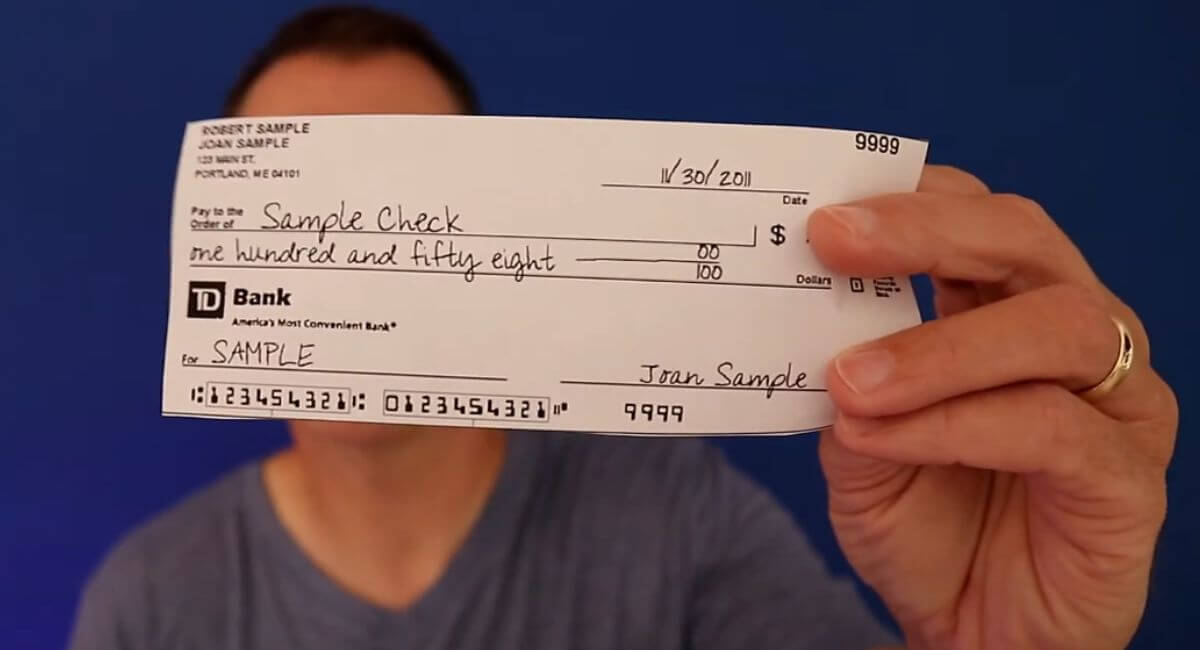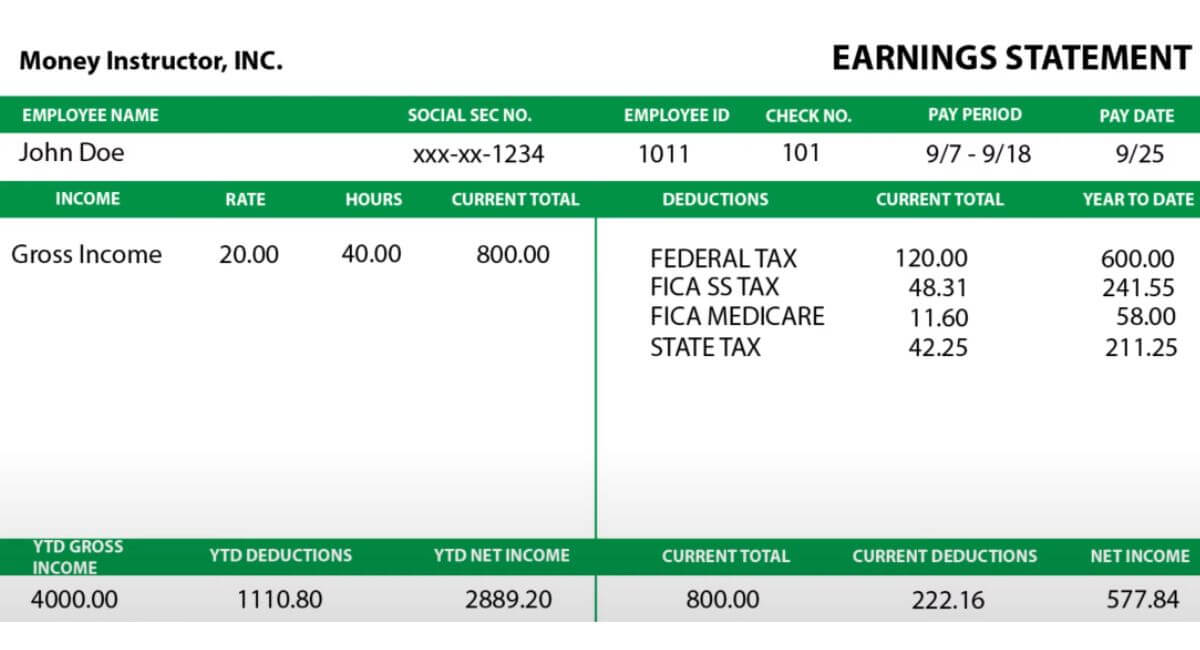What Is a Check Number and How Is It Used?
Making sense of your paystub or even of a traditional paycheck involves a few considerations on top of understanding the specifics concerning the payment itself. Questions about the check number are common because it’s yet another thing you’ll have to decipher.
So, what exactly is the employee number on the pay stub or the account number on a paycheck? Does it have to be featured on every single document being issued and if so, what information does the number provide?
What Is the Check Number and Why Is It Important?
The definition of a check number is a reference to the number of paychecks that the respective organization has to issue for a certain pay period.
For example, if a company has 25 employees to pay during a certain month, the check numbers will range from one to 25. This digit isn’t something a worker needs to feel particularly concerned about. Rather, it’s a method the accounting team uses to keep track of paychecks.
In other instances, however, people refer to a control number that usually appears on the W-2 form. This control number (box D) is used by numerous payroll departments to identify different W-2 forms within their system.
The W-2 control number is unique to every employee and every employer. Once again, it’s used for tracking documents issued to employees. There is no obligation for the control number to appear on a paycheck stub.
If you need a bit more information on the W-2 control number and its significance, you can check out the following IRS guide.
Where to Find a Check Number

Usually, the check number appears in the upper right-hand corner of a paycheck.
For a traditional paycheck, the number is going to be a four-digit code that can be beneficial in terms of record keeping and retrieving documentation later on (for reference purposes or to identify a mistake, for example).
On a paycheck, you’ll find an additional digit that is called an account number.
The account number usually consists of nine to 12 digits. It is provided as a type of “internal” information for banks to count on. The aim of the account number is to enable a financial institution access data about the account that funds should be withdrawn from before getting deposited into yours.
In the absence of a check, you can find your account number in a couple of alternative ways that will be discussed below.
Where to Find a W-2 Control Number (and Should You Try to Do So)
As already mentioned, the W-2 number is something completely different from the payment receipt numbers that are standardly featured for accounting and bookkeeping purposes.
If you need to, you can get a copy of your W-2 form from the IRS. In that copy, look for box D. It’s the space in which your unique control number is going to appear. The transcript is also going to contain all other federal tax information that your employer reported to the IRS. In that sense, getting a copy can be beneficial to find out more (and get additional information on top of what’s being featured in your regular paystubs).
The control number on its own, however, isn’t something you should be concerning yourself with. This code is assigned automatically by payroll software. It doesn’t carry more significance or provide access to additional information. Hence, you should probably just keep track of a paycheck account number as it is the one that can prove to be beneficial.
What’s the Routing Number on a Check
The routing number is a nine-digit code that is used by one financial institution to identify another financial institution.
In other words, each one stands for a bank or a money transfer service provider. The routing number is a short code that simplifies operations and the processing of documents.
Depending on the bank, the routing number could also appear under the name routing transit number (RTN) or American Bankers Association (ABA) routing number. No matter what appears on your check, it refers to one and the same thing.
The routing number works alongside your account number to provide information about where your funds are being kept. Most often, the account number and the routing number are both going to be featured on a paycheck or a money transfer notice.
If you need to find your routing number, you can do so in a couple of ways:
- By checking your payment notice/paycheck for the details
- Through your monthly statement that the bank issues
- Via online banking or a dedicated mobile app created by the financial institution
- Through the US Bank routing number directory – all that you have to do is know the name of the bank and locate the routing number that corresponds to it
Ways to Find Your Account Number in the Absence of a Check
If you don’t have a paycheck at your disposal, you can find the account number in a couple of additional ways.
Through Online Banking/Mobile App
Anyone who has access to services like online banking or a dedicated mobile app can easily access their account number. Some of the simple steps that will need to be followed include:
- Access your online banking account or enter the mobile banking app
- Select the account you’re interested in (if you have more than one)
- In the menu or settings, you should have the option to check your personal information
- There, you will have a navigation option that will take you to the account number
- In some instances, the account number will be obscured for your security. You’ll need to enter a code or go through a verification process to make that information available
The Account Number on a Bank Statement
A traditional bank statement is also going to feature your account number for reference purposes.
On the document, you will have the account number featured on top of the right-hand column. If you’re not seeing it there, get in touch with the bank’s customer service representatives to get more clarity about reading the document.
What is a check number used for?

A check number, which may be seen in the upper and lower right corners of a check, indicates which of the checks in your checkbook you're utilizing.
A check is a bill of exchange or document that ensures the payment of a specific amount. It is produced for the drawing bank to distribute to an account holder (the payor) for usage. Though checks are less commonly used in the digital age of payment applications and automatic bill pay, they may still be a convenient way to make official payments or transfer money through the mail.
Checks allow two or more people to conduct a monetary transaction without exchanging real cash. Instead, the check amount replaces the same amount of actual cash.
Checks can be used to pay bills, make presents, or transfer money between two persons or entities. They are often seen as a more secure method of money transmission than cash, particularly when significant quantities are involved. A third party cannot cash a misplaced or stolen check since the payee can only settle the check.
You may also use them to seek information such as your bank routing and check account numbers, which are required for specific activities such as setting up direct deposit or linking to a payment app such as Venmo.
Check numbers are provided for your convenience so that you can keep track of transactions. When processing checks, the bank does not rely on check numbers, and it is possible to clear numerous checks with the same number.
Account and Check Numbers Appearing on a Paystub
A traditional paystub can feature lots of information, depending on your location and the legal requirements for the provision of such a document.
As you’ve already gathered from the information provided so far in the guide, the account numbers on a paycheck and those on a paystub aren’t one and the same thing. In the case of a paystub, an account number is more likely to refer to a code that the employer uses to identify a worker and the documents being issued to that person.
Check Number on a Pay Stub: What You Need to Know about It
An employee number on a paystub may or may not be featured. When it comes to a check number or an account number, it could be listed under the financial information pertaining to how an employer provides a payment to the respective worker.
First of all, let’s make one thing clear – a pay stub or a paycheck stub isn’t something you can deposit in a bank.
This is a document your employer issues to give you a detailed overview of what you’re being paid and what deductions are being withheld from your earning from a certain period of time. It’s a report that tells you everything you need to know about income and taxes. It’s not a document you can use to get cash from a bank.
More often than not, a pay stub isn’t going to feature an account or a routing number. There’s no need for such sensitive personal and financial information to be featured on the document. Also, there’s no legal requirement for such identifications to be included.
Anyone who still feels uncertain about reading their paycheck stub can go through this ultimate guide to learn more about the nature of the document and the information that it contains.
Final Thoughts on Check Number and Its Use
A paycheck and a paycheck stub are two different documents that have very different purposes. As such, they also tend to contain different kinds of information.
A traditional paycheck is going to contain information about both the account and the routing number. Together, they provide information about where funds should be deposited. In the absence of a check, such information can be accessed effortlessly through a statement or via online banking.
On the other hand, a pay stub may contain an identification number or a control number that is generated by payroll software. This number is used internally within the organization to keep track of documents being issued to one employee or another. Because of this fact and the nature of the control number, it isn’t something that the recipient of the pay stub should be concerning themselves with.
Kristen Larson is a payroll specialist with over 10 years of experience in the field. She received her Bachelor's degree in Business Administration from the University of Minnesota. Kristen has dedicated her career to helping organizations effectively manage their payroll processes with Real Check Stubs.

